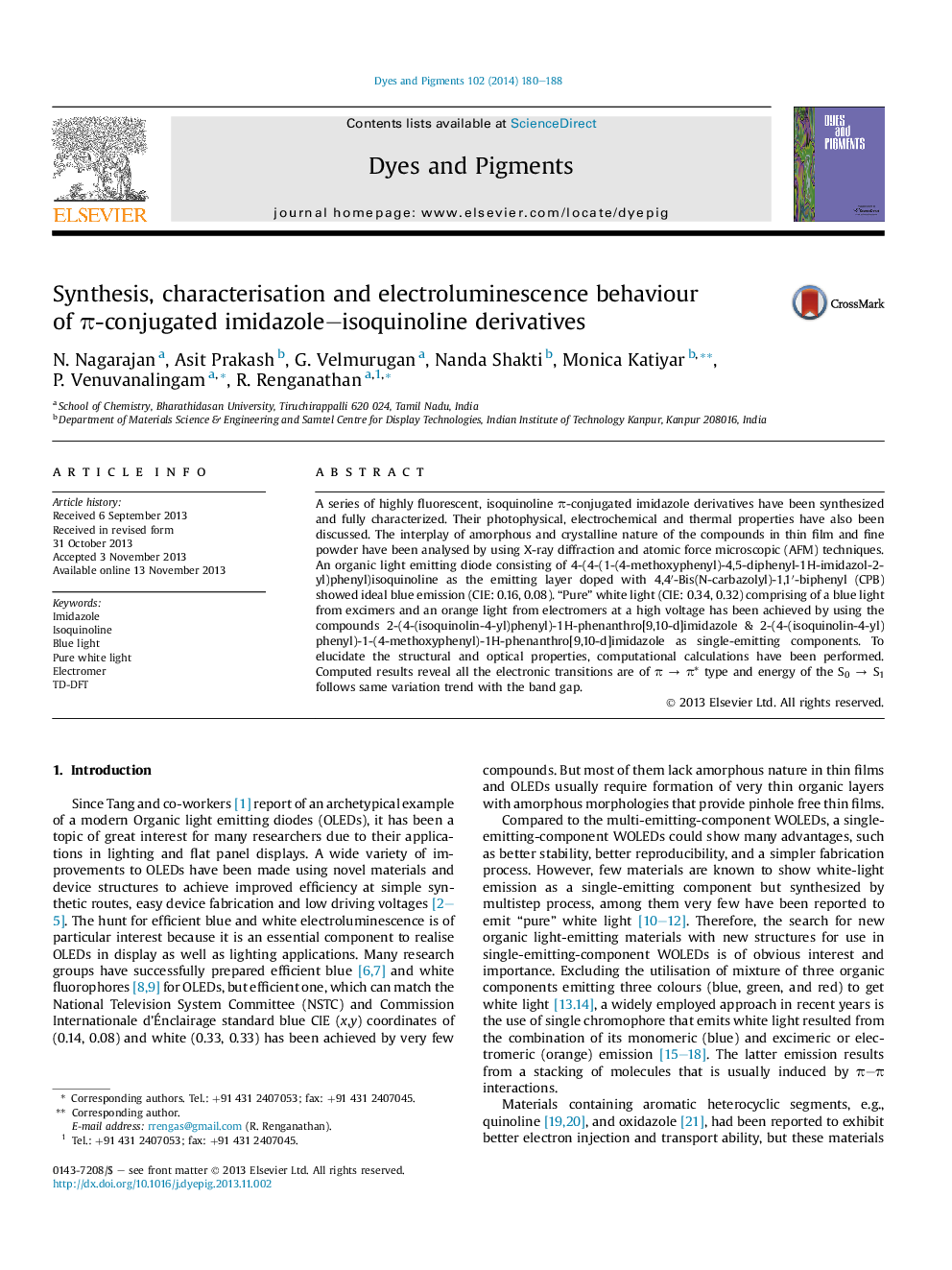| Article ID | Journal | Published Year | Pages | File Type |
|---|---|---|---|---|
| 176182 | Dyes and Pigments | 2014 | 9 Pages |
•Highly fluorescent, isoquinoline–imidazole derivatives have synthesized.•Photophysical, electrochemical, thermal, film forming behaviours have discussed.•Interplay of amorphous and crystalline state of thin film and powder have analysed.•Both blue and white OLEDs have fabricated in various device configuration.•Structural and optical properties have elucidated with DFT and TD-DFT calculations.
A series of highly fluorescent, isoquinoline π-conjugated imidazole derivatives have been synthesized and fully characterized. Their photophysical, electrochemical and thermal properties have also been discussed. The interplay of amorphous and crystalline nature of the compounds in thin film and fine powder have been analysed by using X-ray diffraction and atomic force microscopic (AFM) techniques. An organic light emitting diode consisting of 4-(4-(1-(4-methoxyphenyl)-4,5-diphenyl-1H-imidazol-2-yl)phenyl)isoquinoline as the emitting layer doped with 4,4′-Bis(N-carbazolyl)-1,1′-biphenyl (CPB) showed ideal blue emission (CIE: 0.16, 0.08). “Pure” white light (CIE: 0.34, 0.32) comprising of a blue light from excimers and an orange light from electromers at a high voltage has been achieved by using the compounds 2-(4-(isoquinolin-4-yl)phenyl)-1H-phenanthro[9,10-d]imidazole & 2-(4-(isoquinolin-4-yl)phenyl)-1-(4-methoxyphenyl)-1H-phenanthro[9,10-d]imidazole as single-emitting components. To elucidate the structural and optical properties, computational calculations have been performed. Computed results reveal all the electronic transitions are of π → π* type and energy of the S0 → S1 follows same variation trend with the band gap.
Graphical abstractFigure optionsDownload full-size imageDownload as PowerPoint slide
